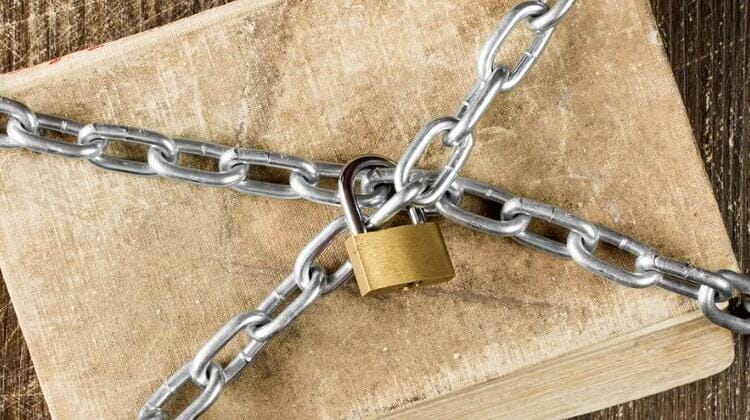
This year’s Banned Books Week is being held from September 22 to September 28, and it’s no surprise that the registration is fully booked. The good news is there are ways to participate and offer support for the cause, such as reading a banned book or using the dedicated hashtags #BannedBooksWeek, #BannedBooks, and #BannedBooksList to spread awareness.
The cause has grown exponentially since the first one in 1982. It has now reached a whopping 3 billion readers, and there is no indication of it slowing down.
If there was ever a time to take a stand against book banning, it is now. It has become a religious and political battlefield, destroying the art form. Censorship has a purpose, but the lines are blurry, and the reason for banning a book seems to be motivated by ignorance and hatred, which is unacceptable since writing should be considered freedom of speech, whether you like the words or not.
This year’s theme is “Freed Between the Lines,” which is a nod towards freeing books from the banned shelf and the freedom to discuss gender, race and other human rights.
Censorship has always been a point of contention because it is based on the morality of the governing body, and many see this as an unjustifiable reason for banning books. Case in point, “The Handmaid’s Tale” is a popular television series, yet the book is forbidden. Where is the logic?
Censorship has always had a reverse effect; it makes things more appealing by creating a mystery around it.
For example, J.D. Salinger’s “The Catcher in the Rye” was once required reading, but it is now banned for having foul language. What I remember about the book is that Holden was a character I could relate to, nothing more.
Censorship leads to racism and the loss of critical historical viewpoints, regardless of whether they are right or wrong. There is something to be learned from past mistakes, and society should not try to forget them.
Most banned books are from authors who are women or members of the LGBTQ community. In the past few years, banned books often have somewhat controversial subjects, such as suicide, abuse, and sexual health. These are topics teenagers and adults need to talk about. It is the adults who are uncomfortable with these discussions. They are placing their fears and viewpoints onto other people and their children, which is unfair.
Many classic novels are banned, and many people are unaware of them.
Here are some classic books that have been banned in schools:
- The Grapes of Wrath
- Ulysses
- Animal Farm
- The Catcher in the Rye
- Alice’s Adventures in Wonderland
- The Wonderful Wizard of Oz
- The Adventures of Huckleberry Finn
To Kill a Mockingbird is one of the most challenging books ever. It has been placed on and off the list of banned books several times under the guise of being too violent. Many people believe the real reason is racially motivated due to the book’s controversial main plot. The book revolves around the trial of a black man who is accused of rape and found guilty simply because of his race, even though he was proven to be innocent. We will never really know what is motivating some people to fight to ban books, but we must not let it be fueled by fear and ignorance.
The violence in Grimm’s fairy tales is evident; Cinderella was abused by her stepmother and stepsisters, Hansel and Gretel were abandoned in the woods, and Snow White was almost poisoned. However, amid the gory details resonates a clear message: good always wins, evil is wrong, and strangers are not always your friends. This is not bad. It was a different period when books were written, and perhaps they were too violent by today’s standards, but that does not mean you should silence the message for everyone. Some people find the Bible or Koran offensive, but these have never been banned because of religious freedoms. What about human rights and liberties?
Censorship is and always will be blurred because while some children may have nightmares reading Grimm, others might grow up to be criminologists. We do not know the effects of books, and we can not allow our children to read them if we choose. We do not have a right to censor what someone else seeks to explore any more than we have a right to silence someone’s voice, viewpoint, or creative expression. We ban books, and yet we do not ban art or entertainment that is violent and sexualizes women. While I agree some of these books should not be put in children’s hands, there has to be a better way than banning books because The Wizard of Oz is one of the greatest stories ever written, and many children should read it. Halloween is the second most loved holiday of children; there are many scary things about it, and no one is banning it based on its macabre message.
Do your part, help celebrate the book-banning week, and support freedom of speech by spreading the message “Freed Between the Lines.” Save the date: Sept 22 – 28.
What is a book that is now banned that you loved to read? Do you still read it? Will you allow your child to read it?
Share Tweet Share Reddit Vote 0 SharesAs stated before, mine is the Wizard of Oz. I have seen the movie about twelve times and read the book about the same, and I would allow my children to read it and watch it if they chose. However, I would limit the age to at least 8 when that would be accepted.